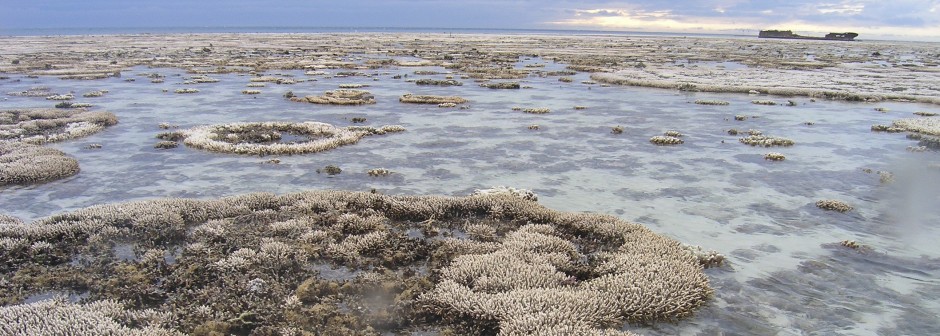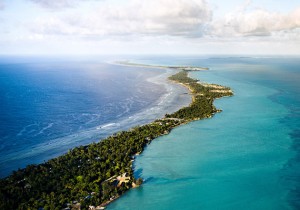Hello and welcome back to my blog about the global bleaching event in the Islands of Kiribati!
While it is difficult to determine the exact changes in the abiotic and biotic factors that are surrounding the Islands of Kiribati, some very interesting things have changed in regard to the political environment. Kiribati’s president (Anote Tong) has come up with a two-fold plan to ensure his countries safety. First, he has plans to physically fortify at least on the islands within the chain. As of 2015, he has been meeting with companies from Japan and the Netherlands to find the proper technology to ensure the nation’s survival. However, the President is also showing foresight in that he is not completely investing in the idea of the physical island’s survival. This manifests itself in the second part of the plan, which is a purchase of 5,000 acres of land in the neighboring nation of Fiji. He has also been involved in talks with other nations to secure admittance for the possible migration of his people. If it must happen, Anote Tong says that it will be a “migration with dignity.(1)”
On the environmental side, Kiribati may be seeing some of the effects of coral bleaching affect it in the most recent years. Though NOAA (2) predicted that it was in danger of bleaching in 2015, a 2014 article by the Guardian (3) separately reported the bleaching event was seriously effecting new areas in Kiribati. If this is true, by now, in 2016, the bleaching is likely to have been spreading throughout the region. Also in 2015, a group of scientists from the Georgia Institute of Technology found that 50-90% of coral in Kiribati had bleached (4), with 30% already dead. They attribute this to the warming effect of El Niño. It seems that in the past year, the reefs surrounding the Island Nation of Kiribati has been increasingly stressed by a combination of climate change and El Niño. In the future, there may be increasing sea levels and temperatures. None of this bodes well for the reef ecosystem. If these factors continue to increase, Kiribati may have to do some serious thinking about how to preserve both their nation and their natural resources.
Overall, we may be seeing Kiribati enter a dangerous zone in regards to its reef ecosystems. There are no indications that these abiotic trends will reverse, thus leading to increasing sea levels, higher temperature, and more aggressive coral bleaching. Additionally, we as a society are struggling to contain our anthropogenic effects, adding to the precipitous situation that these reefs find them in. Add to that the future complex geopolitical situation that Kiribati finds itself in, and you have one large conundrum for the nation and the scientific community. Read the next blog post for more ideas about the future of Kiribati and how its corals will fare!
References
-
Worland, J. (n.d.). Meet the President Trying to Save His Island Nation From Climate Change. Retrieved March 17, 2016, from http://time.com/4058851/kiribati-cliamte-change/
-
NOAA declares third ever global coral bleaching event. (n.d.). Retrieved March 17, 2016, from http://www.noaanews.noaa.gov/stories2015/100815-noaa-declares-third-ever-global-coral-bleaching-event.html
-
Mathiesen, K. (2014). Major coral bleaching in Pacific may become worst die-off in 20 years, say experts. Retrieved March 17, 2016, from http://www.theguardian.com/environment/2014/dec/19/major-coral-bleaching-pacific-may-worst-20-years
-
Scientists In Kiribati Islands Observe 50% – 90% Of Corals Bleached; 30% Already Dead. (n.d.). Retrieved March 17, 2016, from http://www.democraticunderground.com/112794987
Aerial Kiribati [Photograph]. (n.d.).



